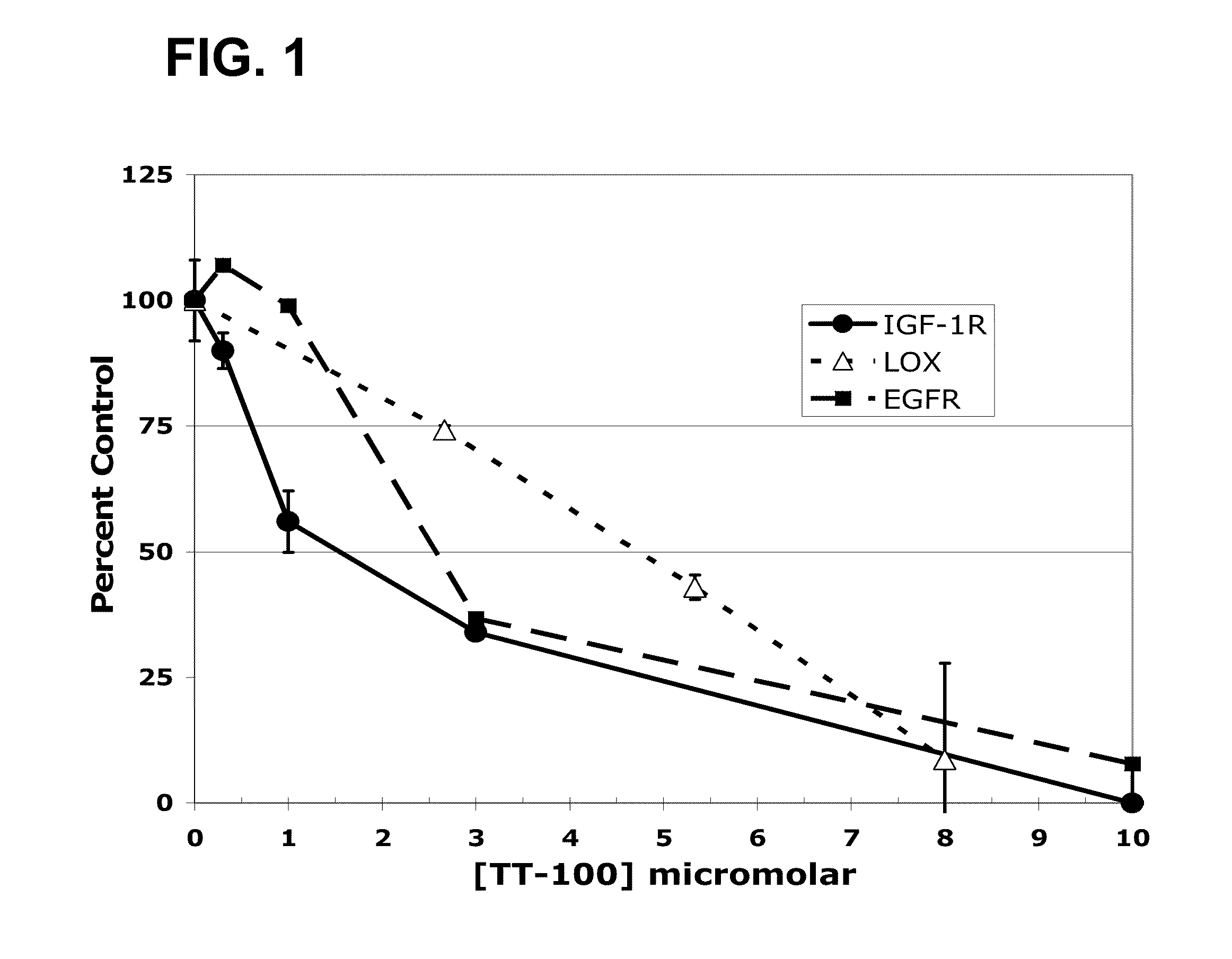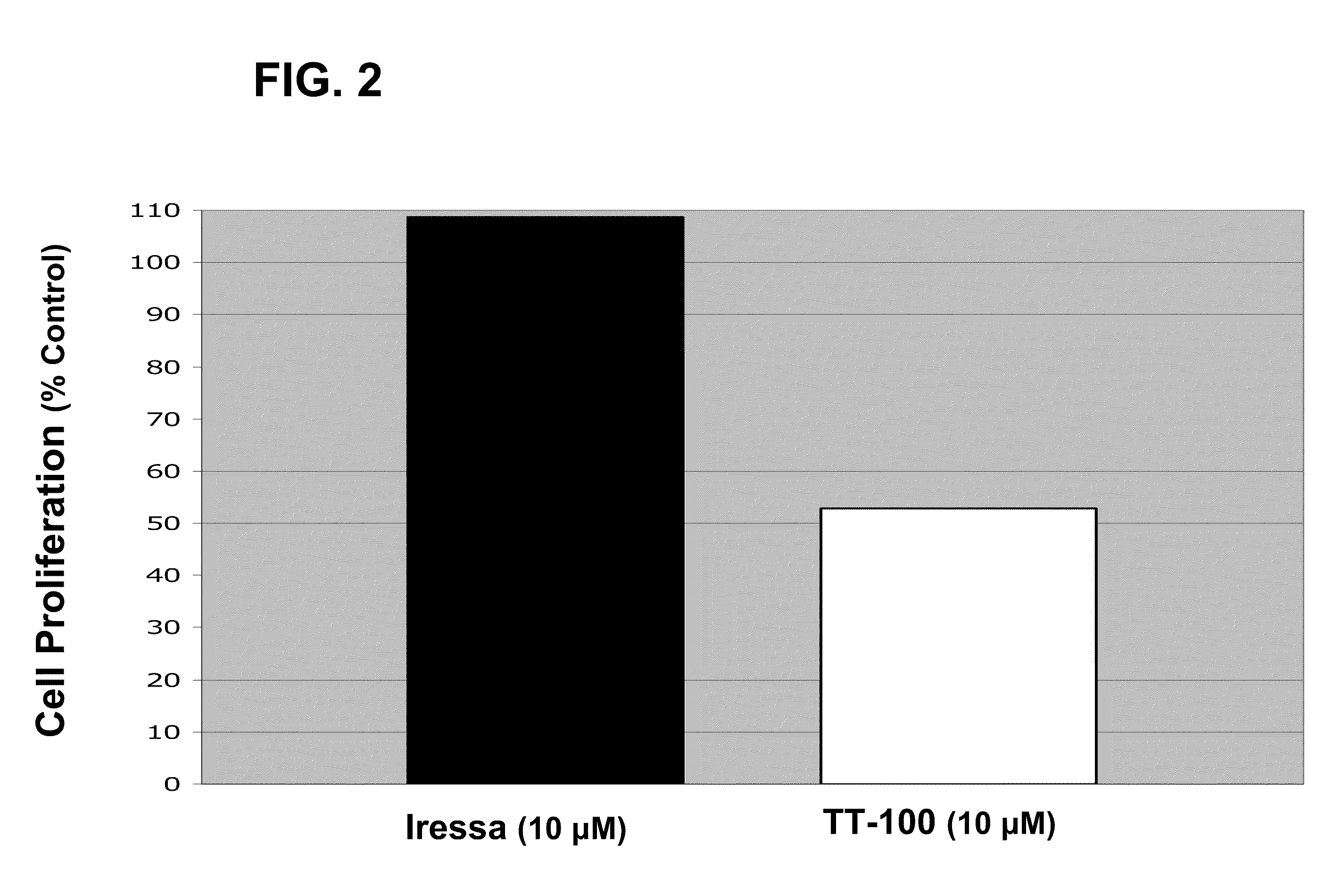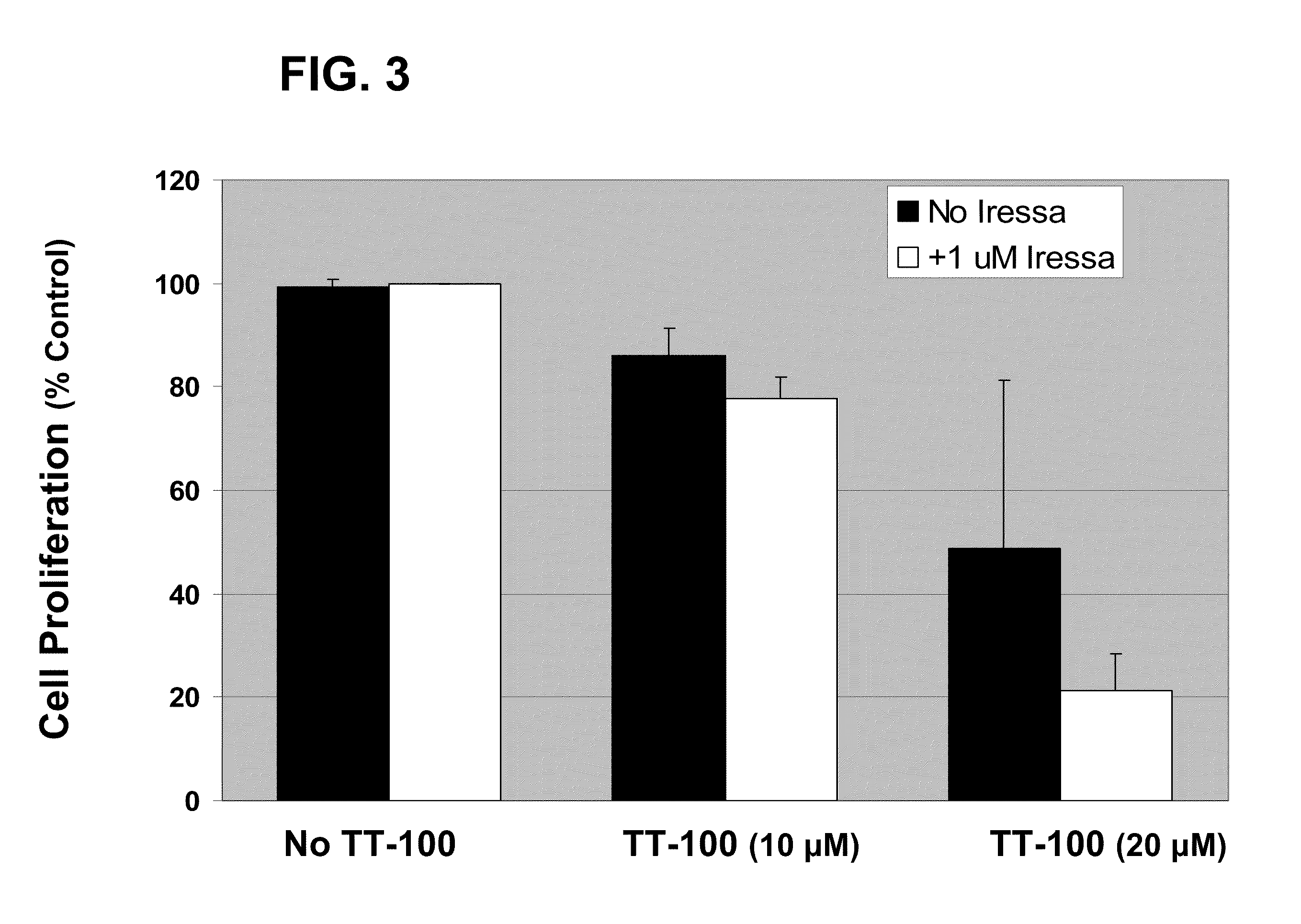Cancer Therapy
a cancer and cancer technology, applied in the field of cancer therapy, can solve the problems of unregulated growth of malignant tissue, serious challenges for modern medicine, and cancerous growths, including malignant cancerous growths,
- Summary
- Abstract
- Description
- Claims
- Application Information
AI Technical Summary
Benefits of technology
Problems solved by technology
Method used
Image
Examples
example 1
Treatment of Basal Cell Epithelioma
[0504]This example describes the antineoplastic activity of compositions containing catecholic butanes in clinical studies on human patients diagnosed with basal cell epithelioma.
[0505]Catecholic butanes may be prepared for topical administration for treatment of basal cell epithelioma.
[0506]The surface of the lesions are tape stripped prior to each application. The test medication is applied directly to the lesion with a coating approximately 2 mm thick and covered with a dressing. After a minimum of seven (7) days, a second application is applied at the discretion of the investigator. The dose ranges from 20-350 mg / cm2 with as much as 500 mg / cm2 utilized for deep tumors. To determine the effect of the test compound on the malignant neoplasma, an excisional biopsy is obtained 30 days after the initial treatment.
example 2
Treatment of Actinic Keratosis
[0507]Human patients diagnosed with actinic keratosis are treated with catecholic butane compositions prepared for topical application.
[0508]The test composition is applied directly to the lesion with a coating of approximately 2 mm and confined to the lesion margin. A dressing is applied to the lesion. A visual examination and measurement of the lesion is performed 7 and 14 days following the initial treatment. At the discretion of the investigator, a second treatment with the same test compound may be applied.
[0509]In order to determine whether the test compound eradicated the pre-malignant neoplasm, a punch biopsy is obtained 30-60 days after the initial treatment. If the biopsy report is negative, i.e., no tumor, the patient is examined every 6 months for a period of 12 months for recurrence.
example 3
Treatment of Tumor Lesions
[0510]Canine patients with various tumor lesions are treated with catecholic butane containing compositions prepared for topical application.
[0511]The animals are restrained from movement for two hours physically or with sedatives (e.g. 0.03 mg oxymorphone / lb2 with atropine sulfate). After clipping, washing and measuring the tumor size, the skin surface is abraded until bleeding occurred. To enhance the penetration of the test compositions for large or subdermal tumors, a 20 or 22 gauge needle is used to puncture the tumor. After blotting the skin dry of blood, the tumor site is covered with a 1-2 mm coating of the test composition extending 5 mm peripherally. After 2 hours, the compound is wiped off and the area gently cleansed. The test composition is applied up to three times within a two-week interval or until the tumor clears.
PUM
| Property | Measurement | Unit |
|---|---|---|
| period of time | aaaaa | aaaaa |
| period of time | aaaaa | aaaaa |
| time | aaaaa | aaaaa |
Abstract
Description
Claims
Application Information
 Login to View More
Login to View More - R&D
- Intellectual Property
- Life Sciences
- Materials
- Tech Scout
- Unparalleled Data Quality
- Higher Quality Content
- 60% Fewer Hallucinations
Browse by: Latest US Patents, China's latest patents, Technical Efficacy Thesaurus, Application Domain, Technology Topic, Popular Technical Reports.
© 2025 PatSnap. All rights reserved.Legal|Privacy policy|Modern Slavery Act Transparency Statement|Sitemap|About US| Contact US: help@patsnap.com



